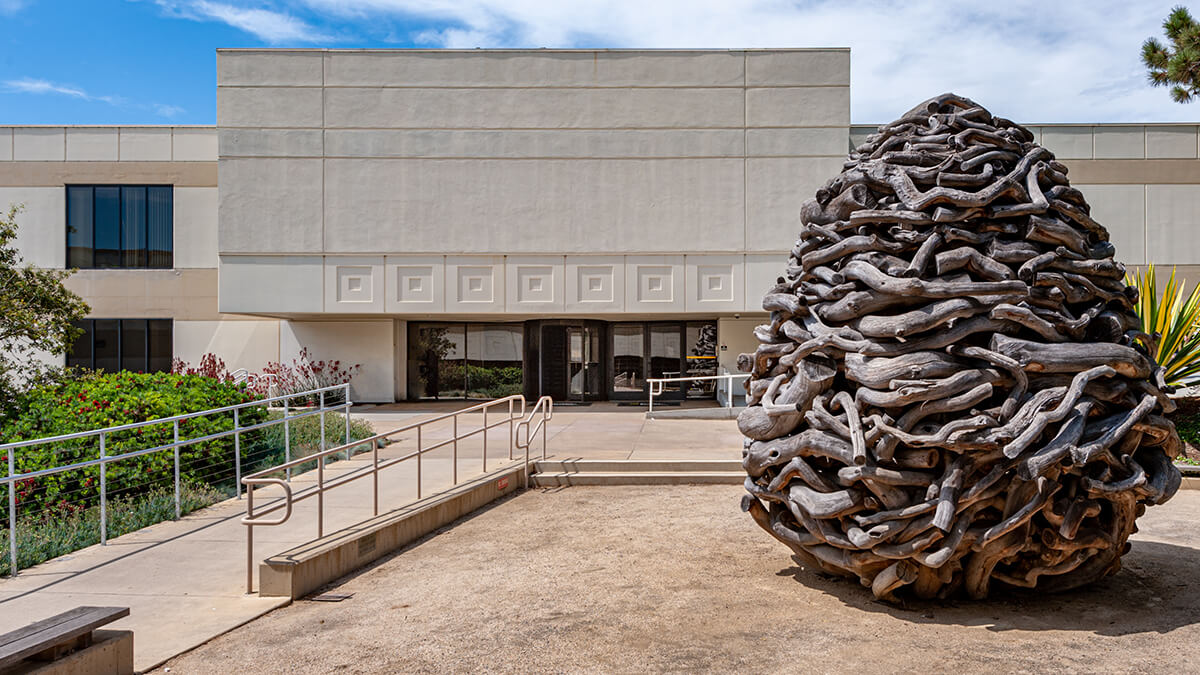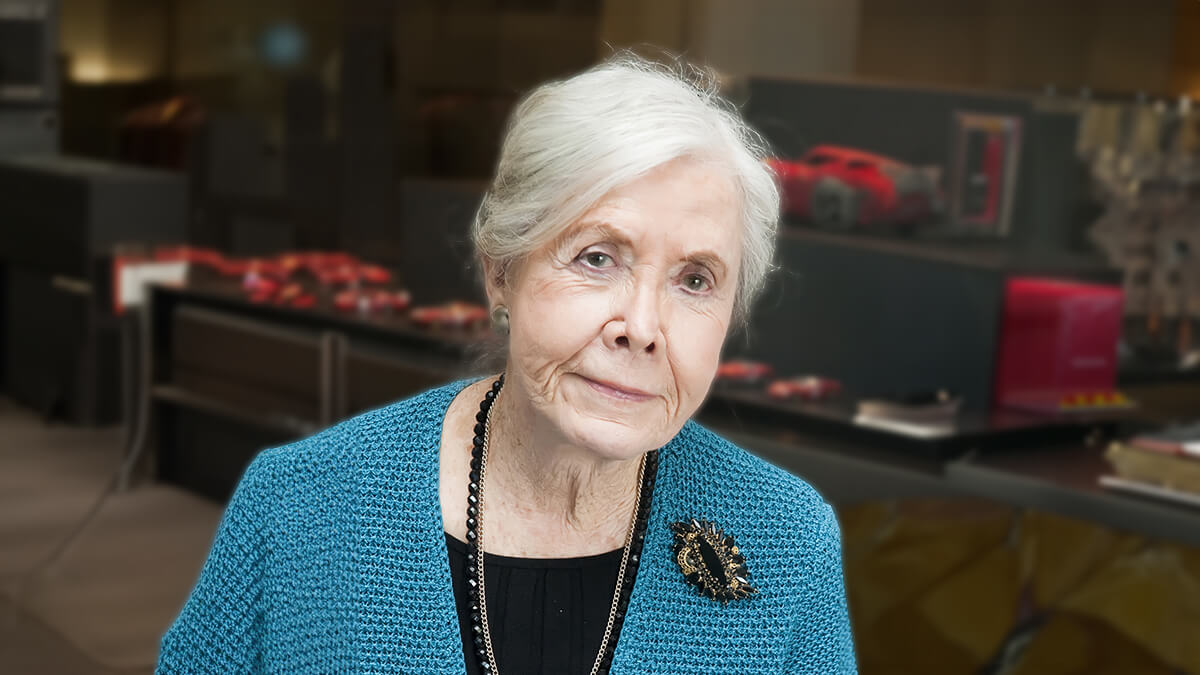
Committed to another century of Science Changing Life
Since 1924, Scripps Research has dedicated lifetimes to demystifying how our bodies work and translating those discoveries into advancements in human health.
As we look forward to the next 100 years, we’ll continue to leverage our world-class capabilities in basic and translational research and to educate the next generation of innovative scientists at our nationally ranked graduate school.
From identifying the root cause of autoimmune diseases to improving cancer treatments to addressing viral infections on a global scale, our scientists are paving the way to the future.
At Scripps Research, we’re committed to another century of Science Changing Life.
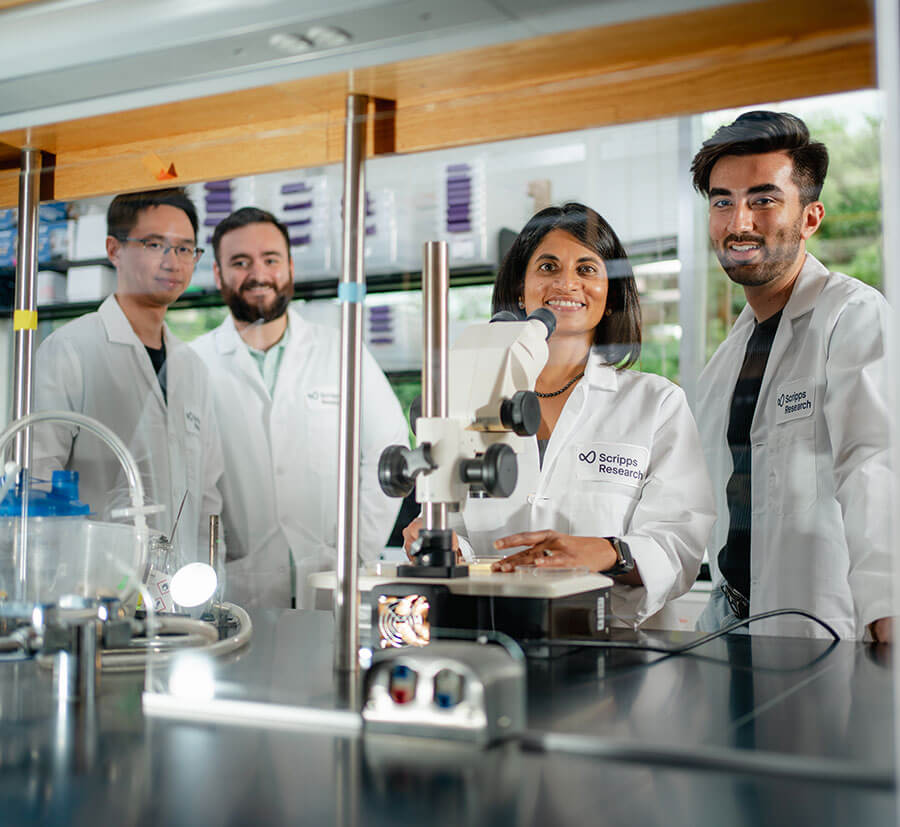
100 Years of Impact
- All
- 1920s
- 1950s
- 1960s
- 1970s
- 1980s
- 1990s
- 2000s
- 2010s
- 2020s
-
1924
Inspired in part by the discovery of insulin to treat diabetes, local philanthropist Ellen Browning Scripps founds the Scripps Metabolic Clinic on December 11, 1924. The clinic is originally part of Scripps Memorial Hospital, established the same year in downtown La Jolla, and physicians perform research as well as patient treatment. Following her death in 1932, Scripps leaves the clinic $300,000 (~$5.3 million today), directing that it be used “preferably for research.”
-
1956
The Metabolic Clinic, having separated from Scripps Memorial Hospital, becomes the Scripps Clinic and Research Foundation — reflecting its broader focus.
-
1961
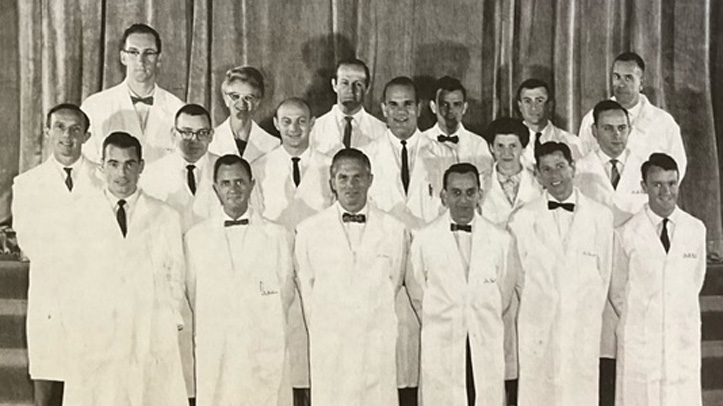
Pioneering immunologist Frank Dixon, MD, and four of his colleagues (William Weigle, PhD; Joseph Feldman, MD; Charles Cochrane, MD; and Jacinto Vazquez, MD) arrive from the University of Pittsburgh on July 1, establishing a Division of Experimental Pathology. They are drawn to the institute by the freedom to pursue research without the traditional administrative constraints of a university, as well as the beginnings of a biomedical research cluster in the area.
-
1971
As operations outgrow the facilities in downtown La Jolla, Dow Chemical Company deeds the Scripps Clinic and Research Foundation 13.2 acres of undeveloped land on the Torrey Pines Mesa. Three years later, with a construction grant from the National Institutes of Health, along with many donor contributions, ground is broken for new research facilities. Most scientists relocate there by 1976.
-
1972
Gerald Edelman, MD, PhD, receives the Nobel Prize in Physiology or Medicine for his discoveries concerning the chemical structure of antibodies. He joins the faculty at Scripps Research 20 years later, bringing The Neurosciences Institute with him — a noted brain research center.
-
1977
Charles Edwards, MD, formerly head of the U.S. Food and Drug Administration, is named president and CEO of the Scripps Clinic and Research Foundation. Multiple research programs that developed, including cell and molecular biology and synthetic and bioorganic chemistry, are formally drawn together into the Research Institute of Scripps Clinic the same year.
-
1985
Sam and Rose Stein, through their trust, deliver the largest gift at the time ever made to a Scripps organization. They direct their endowment to the support of the Sam and Rose Stein Basic and Clinical Laboratories and the Department of Molecular and Experimental Medicine. The remarkable drug Leustatin®, a near-complete cure for hairy cell leukemia, emerges from this department [see 1993 entry].
-
1987
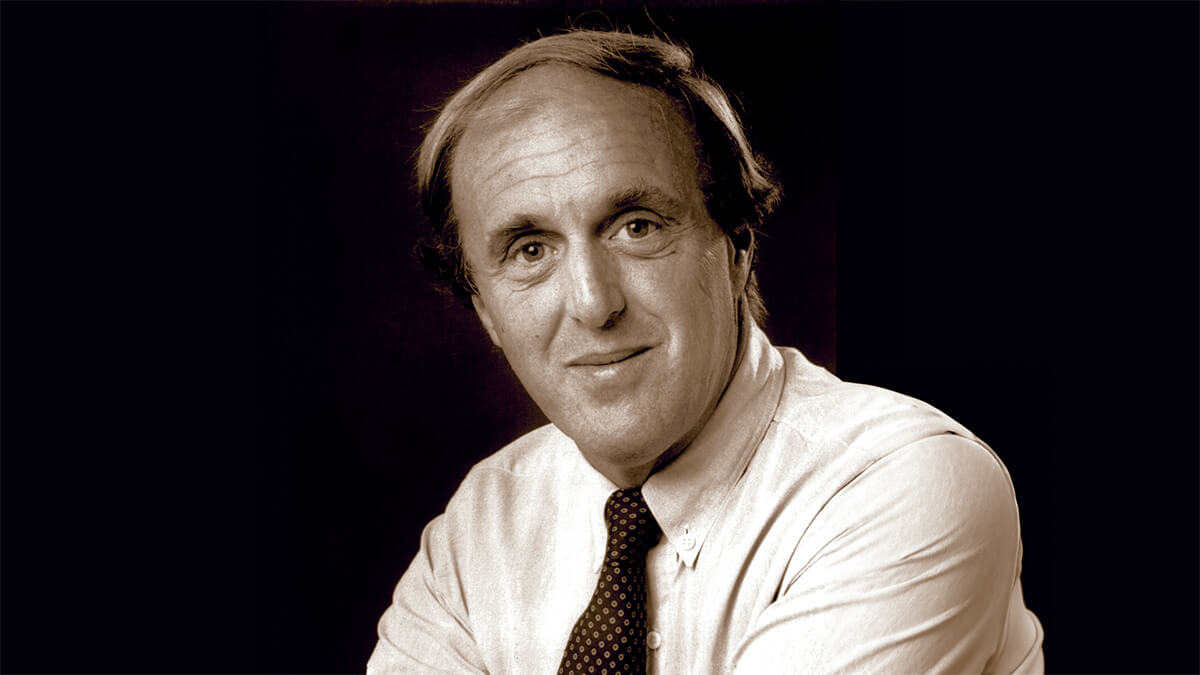
Richard Lerner, MD, chair of the Scripps Department of Molecular Biology, is appointed the research institute’s new director. Under Lerner’s 25-year tenure, research operations triple in size. He establishes a chemistry department that is soon recognized as one of the best in the world and recruits many notable faculty including Velia Fowler, PhD (1987); K.C. Nicolaou, PhD (1989); K. Barry Sharpless, PhD (1990); and Gerald Edelman, MD, PhD (1992).
“He just hired us and said, ‘I will support you, do your thing.’ That was something rare in a leader.” – K. Barry Sharpless, Professor, Two-time Nobel laureate
-
1989
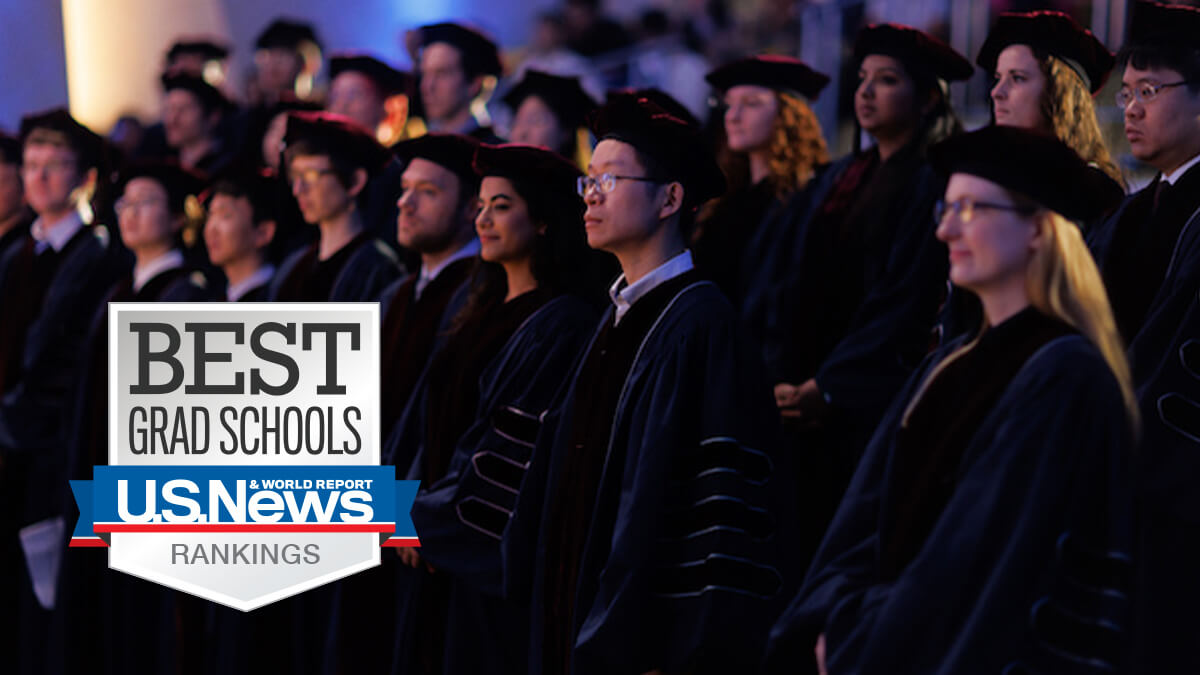
The institute launches a graduate program, building on its strengths in the integration of cell and molecular biology, structural biology, and chemistry. The program is later named The Kellogg School of Science and Technology in honor of philanthropists Janet R. (“Jean”) Kellogg and W. Keith Kellogg II. Only 10 years after its founding, the graduate school is ranked one of the 10-best programs of its kind in the nation by U.S. News & World Report — an honor it maintains to the present.
-
1991
The Scripps Clinic and Research Foundation (now named The Scripps Research Institute) and Scripps Memorial Hospital reaffiliate, becoming a legal nonprofit entity. The Scripps Research Institute separates from the hospital to become an independent organization two years later.
-
1993
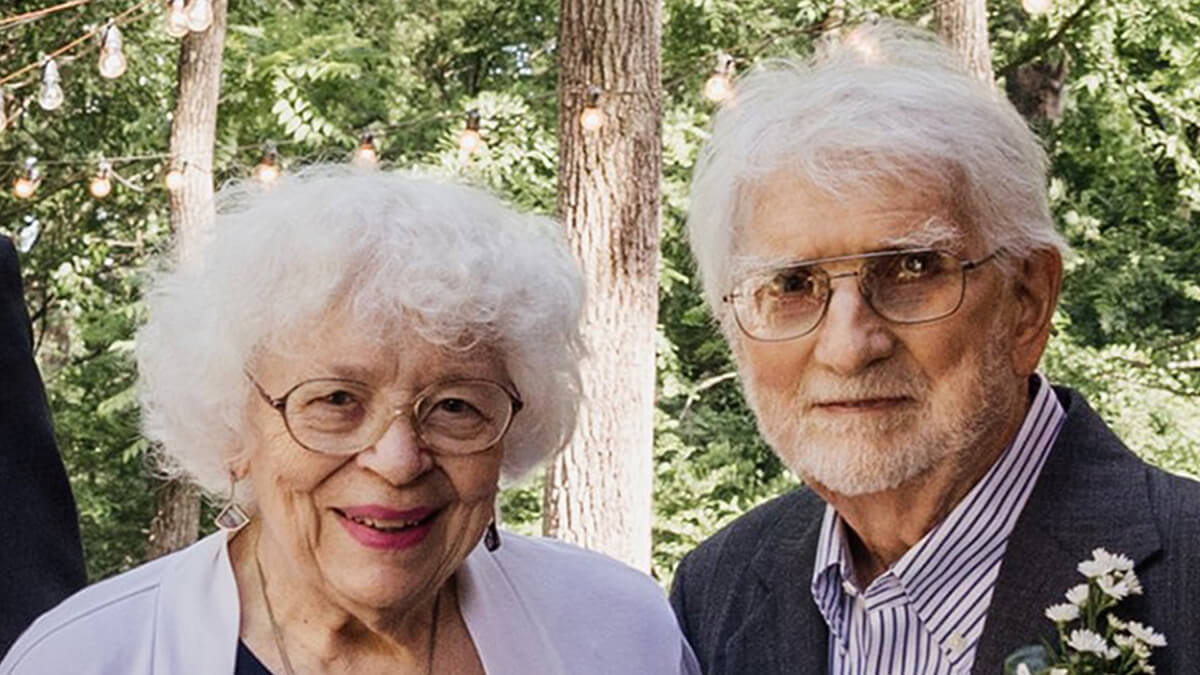
Ernest Beutler, MD, leads the team that tests a new anti-cancer drug developed at Scripps Research by Dennis Carson, MD, and approved by the FDA in 1993. LEUSTATIN® (cladribine, IV) is characterized as one of the most promising chemotherapeutic agents developed and subsequently produces a large number of complete remissions in patients with hairy cell leukemia, as well as other leukemias and lymphomas. Learn more.
-
1994
Peter Schultz, PhD, and Richard Lerner, PhD, share the prestigious Wolf Prize in Chemistry.
-
1995
A three-building complex constructed to house The Neurosciences Institute led by Nobel laureate Gerald Edelman, MD, PhD, opens on the East Campus of Scripps Research. Designed by the firm Tod Williams Billie Tsien Architects (who go on to design the Obama Presidential Center), the complex is acclaimed for its Modernist style. The New York Times calls it a “magnificent piece of work.”
-
1996
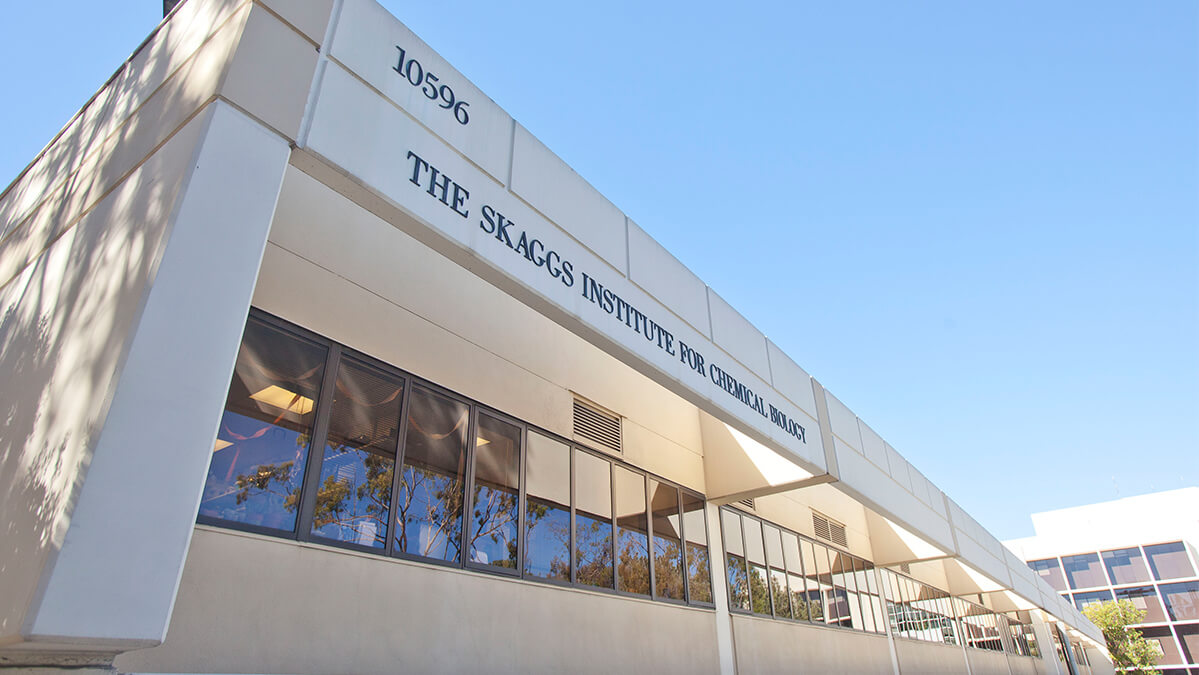
The Arnold and Mabel Beckman Center for Chemical Sciences — a 165,000 sqft, state-of-the-art research facility — is completed with substantial funding from the Arnold & Mabel Beckman Foundation. A successful chemist and inventor, Arnold O. Beckman founded Beckman Instruments (now Beckman Coulter), a company that supports laboratory research around the world.
Thanks to a transformational $100 million gift from the Skaggs family, the Skaggs Institute for Chemical Biology is established at Scripps Research. The Skaggs Institute conducts pioneering research at the interface of chemistry and biology to develop novel cures for diseases. Noted chemist Julius Rebek, Jr., PhD, an expert on molecular self-assembly, moves his laboratory from MIT to helm the institute, and more than a dozen newly recruited faculty join him from other institutes.
-
2001
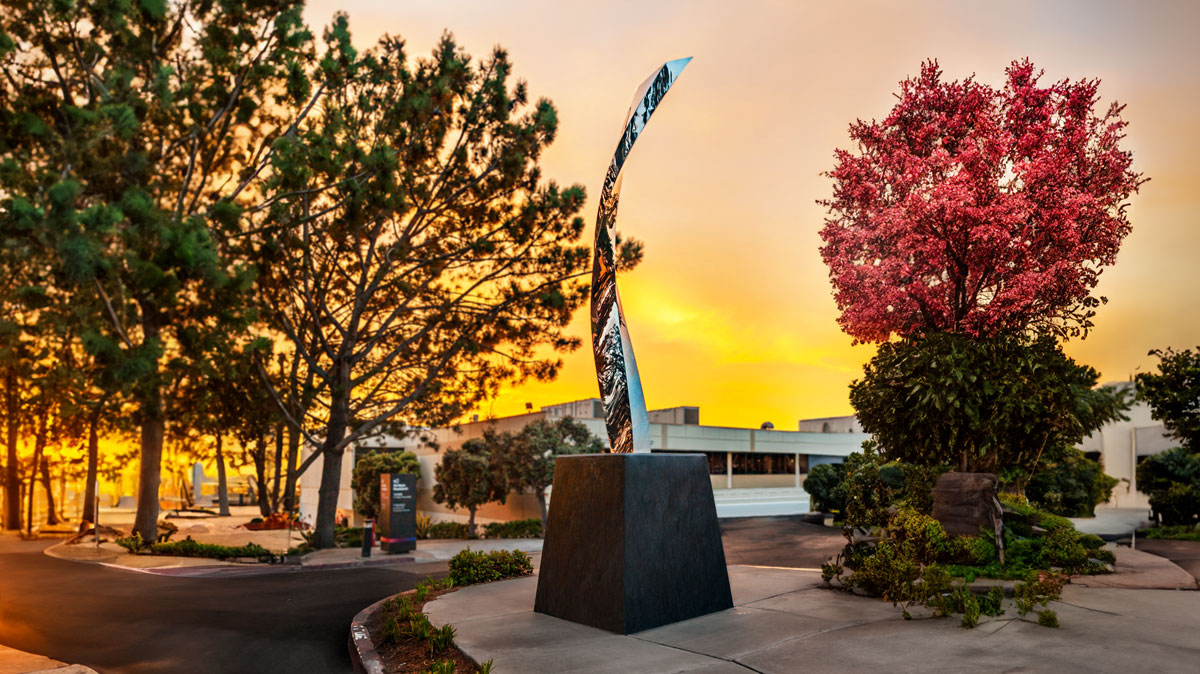
To honor the memory of Norton B. Gilula, PhD — the first dean of the graduate school — the institute erects “The Flame of Knowledge,” a 15-ft-high polished steel sculpture, on its campus. The sculptor, John Safer, who is also a member of the Board of Trustees, says the statue symbolizes what education is all about, “an unending search, a groping upward; but you never quite get there, so it’s cut off at the top.”
K. Barry Sharpless, PhD, receives the Wolf Prize in Chemistry and the Nobel Prize in Chemistry for his work on chirally catalyzed oxidation reactions.
The world’s largest nuclear magnetic resonance (NMR) magnet ever constructed arrives at the institute, where it is assembled into the most sensitive NMR instrument on the planet.
-
2002
Kurt Wüthrich, PhD, receives the Nobel Prize in Chemistry for his development of nuclear magnetic resonance spectroscopy for determining the three-dimensional structure of biological macromolecules in solution. Watch the interview series.
By searching among billions of antibody variants taken from human blood samples, a technique called “combinatorial antibody libraries” enables scientists to identify human antibodies that bind to specific targets involved in disease. This work, stemming from research in the lab of Richard Lerner, MD, leads to development of the drug HUMIRA® (adalimumab), which is approved by the FDA in 2002 to treat rheumatoid arthritis. HUMIRA® is subsequently approved to treat other conditions and becomes the most-prescribed drug in the world.
-
2003

Scripps Research and the University of Oxford establish a joint doctoral program in which graduate students study biochemistry at Oxford for two to three years and chemistry or biology at Scripps Research for two to three years. They emerge with a joint DPhil/PhD degree. This marks the first time in its 900-year history that the University of Oxford has offered a degree jointly with any other institution of higher learning.
The institute receives $3 million from Mark Pearson, a San Diego real estate investor and venture capitalist, to establish The Pearson Center for Alcoholism and Addiction Research at Scripps Research. Scientists at the center combine laboratory investigations of neurochemistry and molecular biology with clinical applications to understand addiction. They focus on the physiological changes in the brain that both drive excessive drinking and drug use and create vulnerability to relapse.
-
-
2005
When Florida seeks to seed a biosciences cluster in Palm Beach County and offers government subsidies, construction begins there for a satellite Scripps Research campus on 30 acres.
-
2008
Thomson Reuters ranks the papers published by Scripps Research chemists over the previous 10 years as having the highest impact in the world, as measured by the number of citations per paper.
-
2009
The new Florida facility, comprising three state-of-the-art buildings and more than 350,000 sqft of space, opens in Jupiter. Research on the new campus focuses on basic biomedical science, drug discovery, and technology development. The campus integrates with the University of Florida in 2022.
Biologist Kristin Baldwin, PhD, successfully creates live mice from mouse skin cells without using embryonic stem cells or cloning techniques that require eggs. This innovation opens the door to the development of promising therapies, such as using a patient’s own cells to grow replacement organs.
-
-
2011
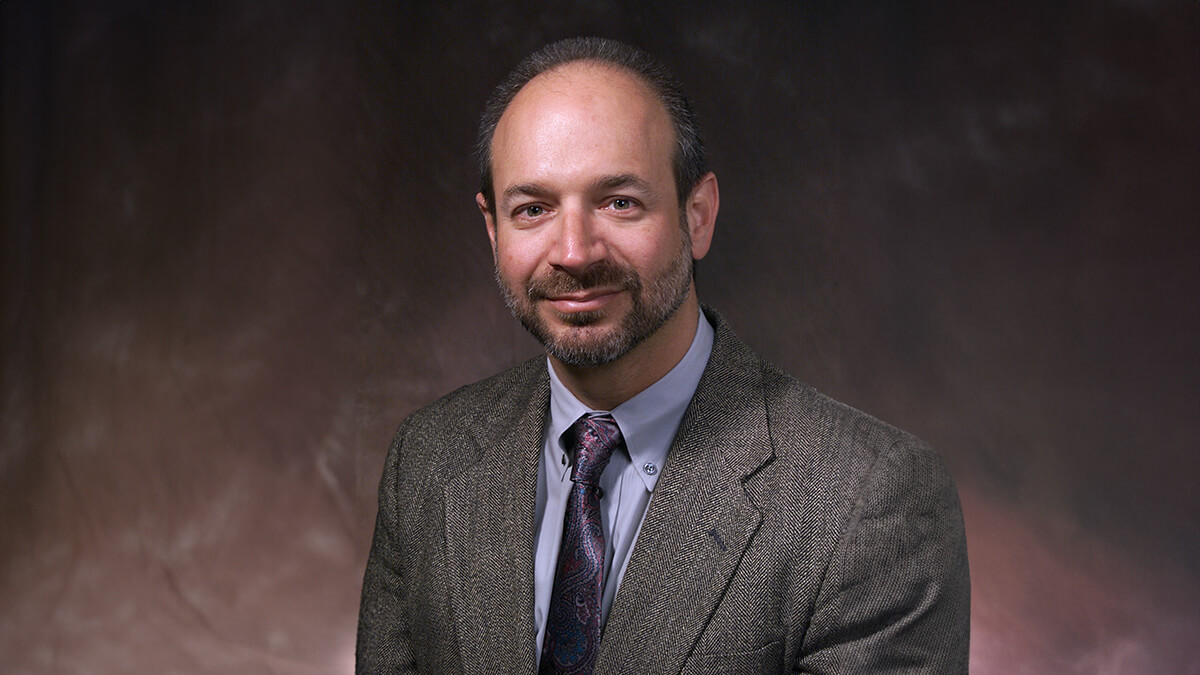
Bruce Beutler, MD, wins the 2011 Nobel Prize in Physiology or Medicine for discoveries concerning the activation of innate immunity. At the time of the award, Beutler is chair of the Department of Genetics at Scripps Research.
Thomson Reuters ranks Scripps Research #1 in the world in chemistry for the decade 2001-2011. The citation rate per 1,000 or more papers from Scripps Research faculty is 41.7, besting the citation rate at Harvard, Rice and Caltech.
Scientific findings and advances from the lab of Richard Lerner, MD, lead to the approval of BENLYSTA® (belimumab) by the FDA to treat the most common type of systemic lupus erythematosus (lupus). BENLYSTA® is the first new lupus therapy in more than 50 years.
-
2012
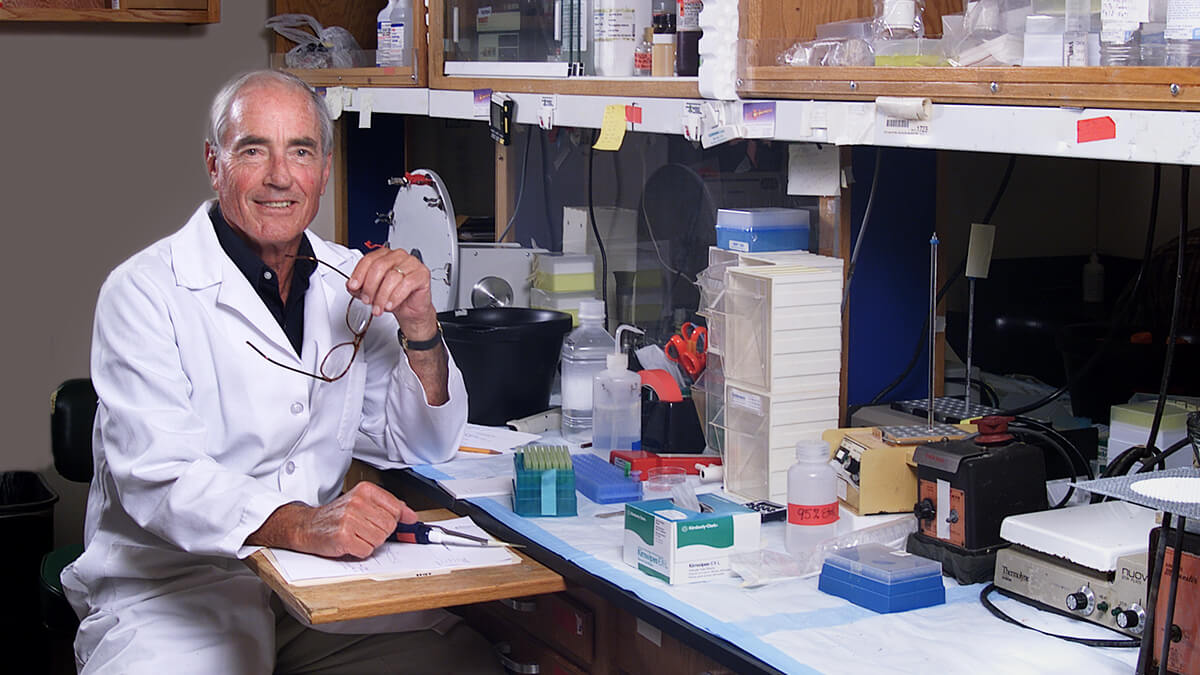
Stemming from two decades of work performed by Charles Cochrane, MD, SURFAXIN® (lucinactant) is approved by the FDA to treat respiratory distress syndrome (RDS), a condition that strikes preterm infants whose lungs lack surfactant, a coating of rigid proteins that keeps the spherical air sacs in the lungs from collapsing. The drug subsequently helps thousands of premature infants.
-
2013
Chemistry professor Phil Baran, PhD, is named a MacArthur Fellow for his work “inventing efficient, scalable and environmentally sound methods for recreating in the laboratory natural products with potential pharmaceutical applications.”
Neuroscience professor George Koob, PhD, is tapped to direct the National Institute on Alcohol Abuse and Alcoholism for the National Institutes of Health.
-
-
2015
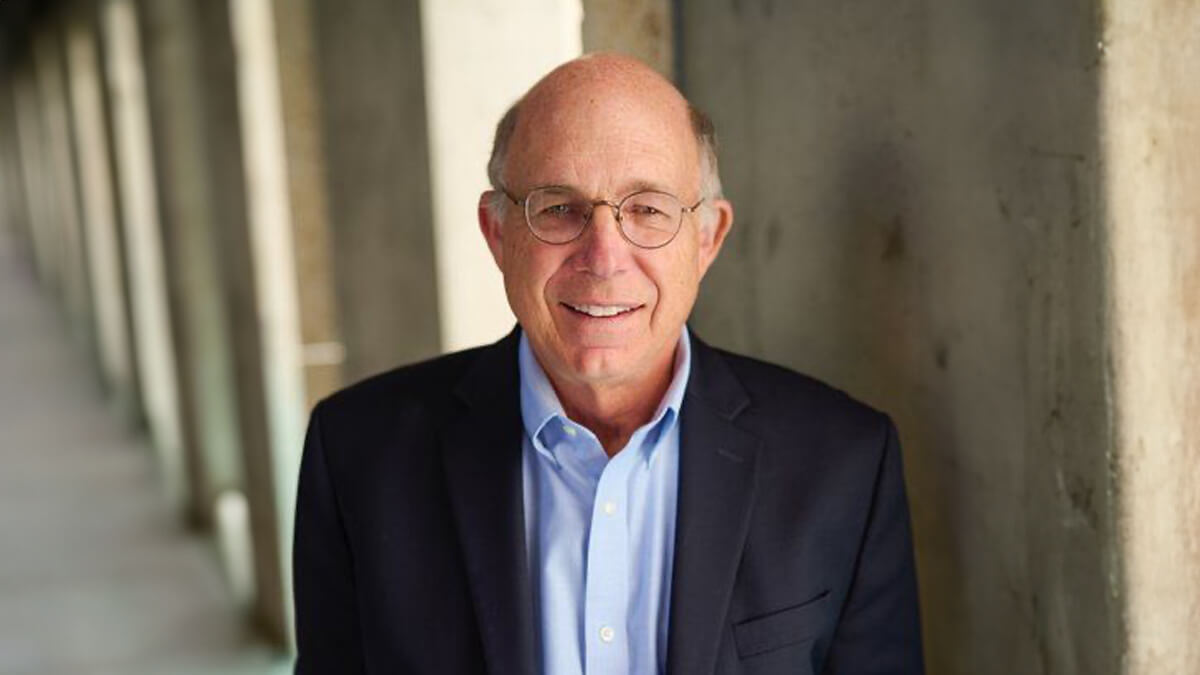
Times Higher Education, a weekly magazine based in London, ranks Scripps Research #1 in the world in the production of impactful scientific papers cited in patent applications.
PORTRAZZA® (necitumumab) is approved by the FDA. Used in combination with existing chemotherapies to treat metastatic squamous non-small cell lung cancer, it provides patients a new option.
Work in the lab of Ralph Reisfeld, PhD, leads to the approval of UNITUXIN® (dinutuximab) by the FDA to treat high-risk cases of neuroblastoma, the second leading form of childhood cancer.
Peter Schultz, PhD, is named chief executive officer and vice chair of Scripps Research. The following year, he is named president. He sets about implementing a novel model at the institute: basic research will seed drug discovery, new candidate medicines will be developed and advanced through pre-clinical and early clinical trials by the institute itself (capturing more of their value), strategic alliances will be formed with pharmaceutical companies to bring these novel medicines to market, and subsequent royalties will be reinvested in further basic research. Scripps Research thus creates a self-sustaining model for nonprofit research, amplifying the impact of federal and philanthropic support along the way.
-
2016
The institute is reorganized into five departments that reflect its academic strengths: Chemistry, Immunology and Microbiology, Integrative Structural and Computational Biology, Molecular Medicine and Neuroscience.
Synthetic chemist Jin-Quan Yu, PhD, is named a MacArthur Fellow for his work “pioneering new methods for the catalysis and functionalization of carbon-hydrogen bonds and enabling the development of versatile, novel and beneficial chemical compounds.”
The Scripps Research Translational Institute (formerly the Scripps Translational Science Institute) receives a record $207 million in National Institutes of Health funding as part of its national All of Us Research Program.
-
2017
Scripps Research is named the most influential research institution in the world according to the Nature Index 2017 Innovation supplement, which sheds light on the impact of academic research on innovation.
Scripps Research and the Scripps Translational Science Institute (founded by noted cardiologist and digital medicine researcher Eric Topol, MD) merge after a decade-long partnership — with the latter becoming the Scripps Research Translational Institute. Today, the Translational Institute works to individualize healthcare by leveraging the remarkable progress being made in genomic and digital health technologies and combining it with artificial intelligence.
The institute launches its Scripps Research Fellows program, designed to identify the next generation of scientific leaders and set them up for impactful careers.
BAVENCIO® (avelumab) is approved by the FDA as the first treatment for patients with metastatic Merkel cell carcinoma. It is currently used to confront other carcinomas as well.
-
2018
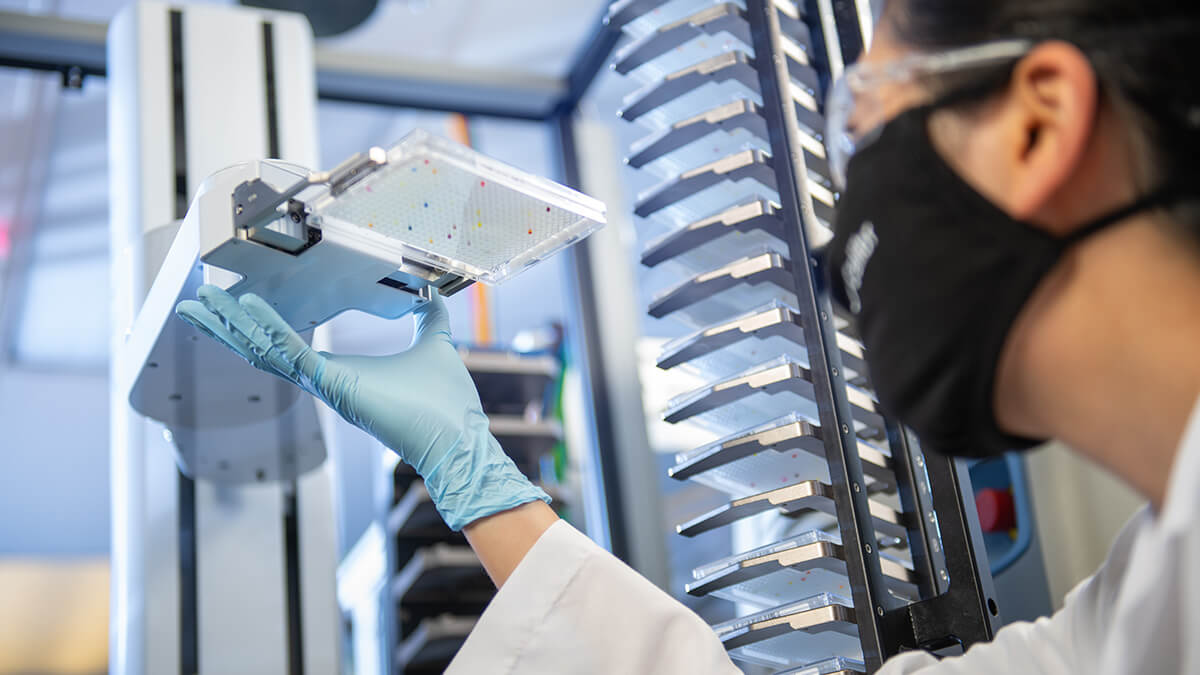
TAKHZYRO® (lenadelumab-flo) is approved by the FDA to help prevent attacks of hereditary angioedema, a rare disorder that disrupts the normal flow of blood and other fluids in the body.
PALYNZIQ® (pegvaliase-pqpz) is approved by the FDA, a novel enzyme therapy for adults with phenylketonuria (PKU) — a rare and serious genetic disease.
Calibr, founded by Peter Schultz, PhD, in 2012 as the nonprofit California Institute for Biomedical Research, completes a merger with Scripps Research — becoming the institute’s drug discovery and development division. Its world-class infrastructure and exceptional drug development expertise have created a portfolio of 50+ drug candidates in only 10 years, with several currently in clinical trials in patients. Watch the video.
Members of the Skaggs family, longtime supporters of the institute, make a lead gift through their foundations toward the institute’s $100 million campaign to establish endowed fellowships for all students in its graduate program. In recognition of this gift, the program is renamed the Skaggs Graduate School of Chemical and Biological Sciences.
Scripps Research ranks top stand-alone scientific institute in the United States for producing high-quality research by Nature Index, based on discoveries published in leading scientific journals. The institute receives the honor again the following year.
-
2019
MAVENCLAD® (cladribine, oral) is approved as the first short-course oral medicine for patients with relapsing forms of multiple sclerosis.
VYNDAQEL® (tafamidis) is approved by the FDA for the treatment of transthyretin familial polyneuropathy (TTR-FAP), a rare and fatal neurodegenerative disease. Work headed by Jeffery Kelly, PhD, results in the drug’s discovery and development and earns him the 2022 Breakthrough Prize in Life Sciences. Watch the video.
The Scripps Consortium for HIV/AIDS Vaccine Development (CHAVD), an international collaboration led by Scripps Research, receives $129 million in funding from the National Institutes of Health. The award supports the advance of next-generation vaccines designed to coax the immune system into producing antibodies capable of disarming numerous strains of HIV. Watch the video.
-
2020
In response to the emergence and spread of SARS-CoV-2, scientists at Scripps Research partner with peer institutions across San Diego to launch the San Diego Epidemiology and Research for COVID Health (SEARCH) alliance. The consortium focuses on screening local healthcare workers and first responders for COVID-19 to understand the prevalence of infections in the community.
TRODELVY® (sacituzumab govitecan-hziy), invented with the aid of click chemistry, is approved by the FDA as a novel treatment for bladder cancer, urinary tract cancers, and triple-negative breast cancer.
ZEPOSIA® (ozanimod) is approved by the FDA for the treatment of adults with relapsing forms of multiple sclerosis. Hugh Rosen, MD, PhD, and Edward Roberts, PhD, along with their laboratory teams, discovered and developed the drug. In 2021, Zeposia® is approved for treating ulcerative colitis as well. Watch the video.
Scientists at Scripps Research make notable contributions toward combating the COVID-19 pandemic, including identifying the evolutionary origin of the SARS-CoV-2 virus, discovering antibodies that protect against the virus, and launching a nationwide study using data from wearables to flag the onset of illness. Watch the playlist.
-
2021
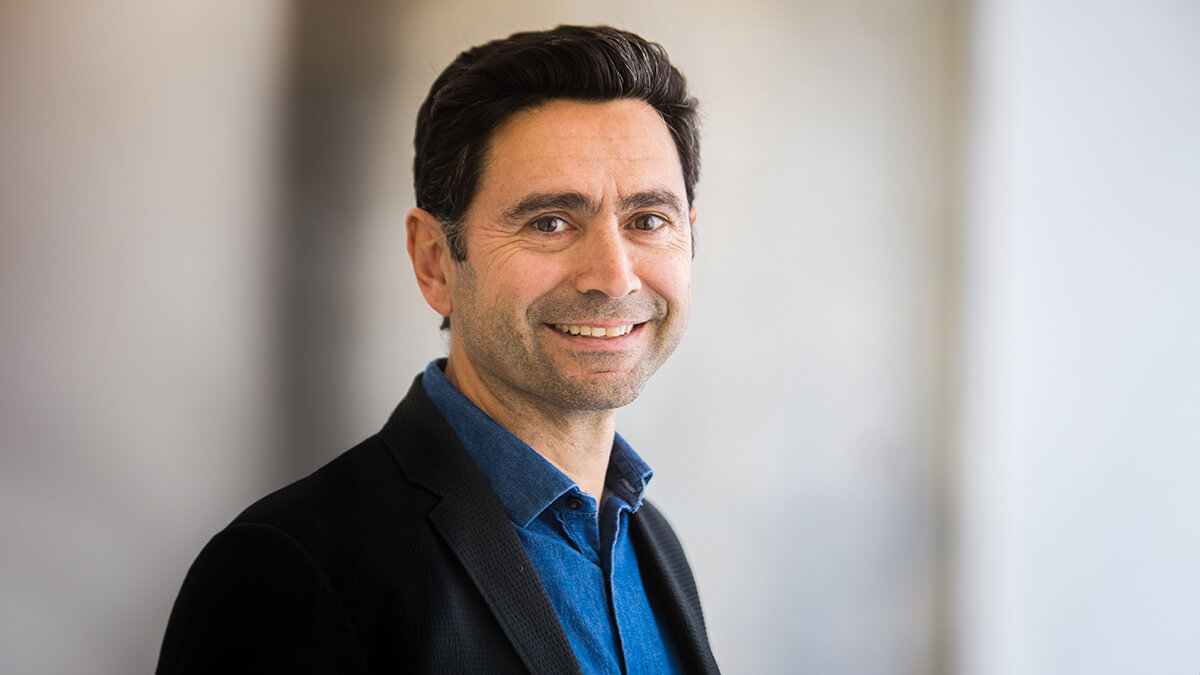
Ardem Patapoutian, PhD, receives the 2021 Nobel Prize in Physiology or Medicine for discovering receptors critical to temperature and touch. Watch the video.
COVID-19 vaccines are developed and FDA approved in record time with key innovations from scientists at Scripps Research, including the laboratory team of Andrew Ward, PhD. These vaccines help protect people from SARS-CoV-2, the coronavirus that causes COVID-19. Watch the video.
-
2022

Scripps Research breaks ground on its East Campus for an 83,000 sqft, ultramodern research facility destined to house collaborative teams of chemists, structural biologists, and molecular medicine specialists focused on translating scientific insights into new drugs. Honoring one of the institute’s top glycobiologists, The Chi-Huey Wong Laboratories for Biomedical Research rises at the gateway to the life sciences community in San Diego.
Benjamin Cravatt, PhD, wins the prestigious Wolf Prize in Chemistry.
The National Institutes of Health awards Scripps Research $67 million to establish the Center for Antiviral Medicines and Pandemic Preparedness (CAMPP). The center unites the institute’s virology expertise with Calibr’s drug discovery infrastructure on a mission to create drugs against viruses with high pandemic potential.
K. Barry Sharpless, PhD, receives the 2022 Nobel Prize in Chemistry for developing click chemistry. It is his second Nobel, making him one of only two scientists in history to win two Nobel Prizes in Chemistry. Watch the video.
-
2023
Jeffery Kelly, PhD, wins the Wolf Prize in Chemistry.
The National Institutes of Health renews its All of Us Research Program grant to the Scripps Research Translational Institute for an anticipated total of $282 million. The program has created one of the largest and most diverse health databases of its kind to help accelerate precision medicine and decrease health disparities.


